Raccoon damage to yards, roofs, attics, and crawlspaces costs homeowners thousands of dollars in repairs every year (a standard homeowner’s insurance policy might cover the cost of repair but not trapping and removing. Contact your insurance company).
These critters are smart and constantly on the hunt for both food and shelter. Bird feeders, trash cans, and pet food will attract a raccoon to your property. Their agile paws allow them to tear into materials that would deter other animals, resulting in harm to property
Raccoons in Texas
Raccoons live across Texas in all vegetative regions. Raccoons are most numerous in the Eastern part of the state and prefer hardwood-timbered habitats located close to water.
They occupy a variety of other habitats, including bottomland swamps, marshes, land around lakes or ponds surrounded by narrow stands of trees, farmlands (especially those with corn or milo fields), and heavily wooded residential areas in cities.
Why is a raccoon in my attic?
Raccoons will inhabit urban and suburban areas if sufficient food sources, water, and cover are available. Raccoons den in hollow logs or trees. Attics provide similar qualities for an ideal raccoon den.
Mother raccoons look for a safe place to create a den to have their litter. The raccoon breeding season begins in February and continues through August. Most raccoons are born in April or May.
Raccoon noises in the attic are one of the surest signs of an infestation. A Plano homeowner heard whining throughout the day, and loud thumping at night. During the inspection, we found a mother raccoon and a litter of baby raccoons.
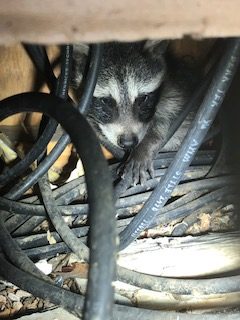
Raccoon Damage in Attic
Raccoons can do significant damage to your house. An industrious critter, they’re strong enough to create their own entry holes. They can tear through shingles and plywood, separate soffits from the roof, and destroy vents.
Once inside, they continue to damage. Mother raccoons will use insulation to build their dens. When they den in residential areas, raccoons create separate latrine sites. They consistently return to these locations, which are commonly found on roofs, attics, woodpiles, haylofts, and on or under decks. The raccoon droppings pose a health risk to you and your family.
Raccoons are between 33 to 45 in. long and weigh 7 to 20 lb. That might not seem like a lot, but a raccoon is big enough to cause significant damage. A raccoon in Fort Worth contributed to this ceiling caving in.
Raccoon Removal from Attic
Repellents and deterrents are a waste of time and money. Raccoons acclimate to noise and visual deterrents. They will ignore repellents (if kits are present, raccoon eviction has some success).
The most effective way to get rid of raccoons from your attic is with a cage trap. Before you trap a raccoon, familiarize yourself with the legal requirements of what to do with a trapped raccoon.
The job isn’t over once the raccoon is gone. The raccoon got in once, that entry point still exists. Repair any damage inside your home. Clean up their dens. Decontaminate their latrine sites.
Without proper PPE, you will be exposed to pathogens.
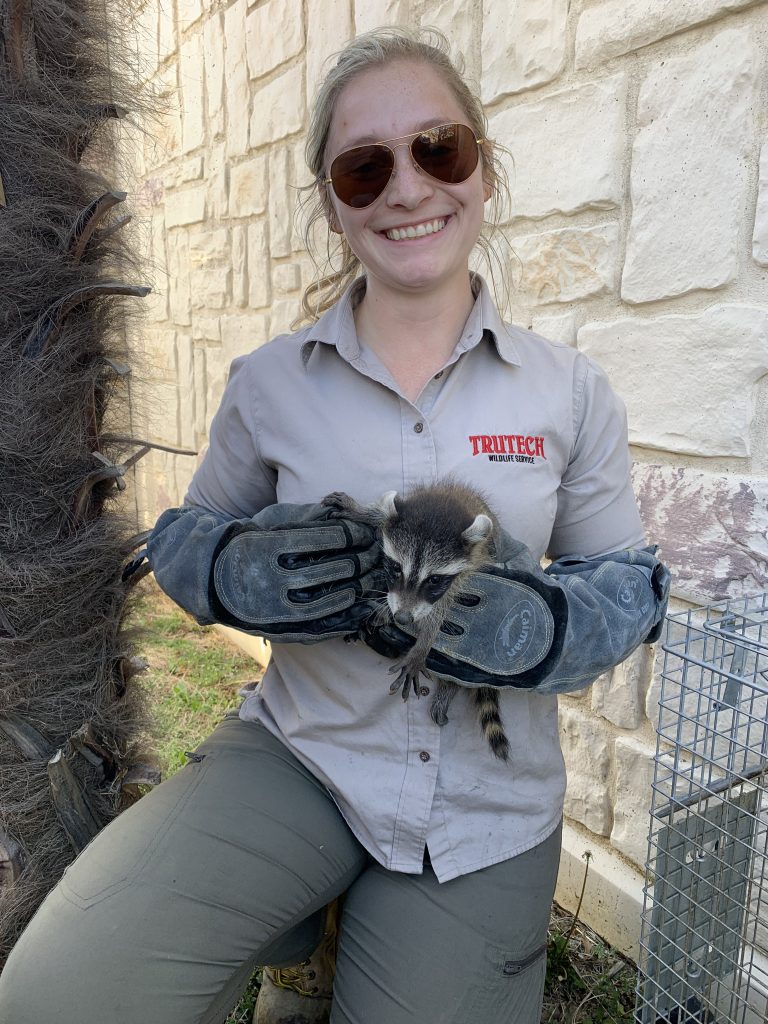
Raccoon problem? Call us for immediate help
- https://www.depts.ttu.edu/nsrl/mammals-of-texas-online-edition/Accounts_Carnivora/Procyon_lotor.php
- https://tpwd.texas.gov/huntwild/wild/species/raccoon/
- https://www.parkertexas.us/279/Raccoons#:~:text=Raccoons%20den%20in%20hollow%20logs,lights%20near%20the%20nest%20site.
- https://digitalcommons.unl.edu/cgi/viewcontent.cgi?article=1172&context=icwdm_wdmconfproc#:~:text=Eviction%20fluids%2C%20developed%20in%20the,young%20from%20an%20inaccessible%20location.


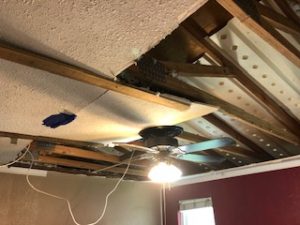
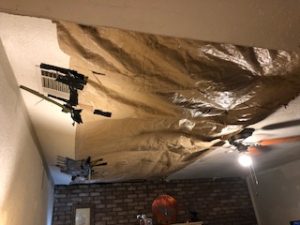
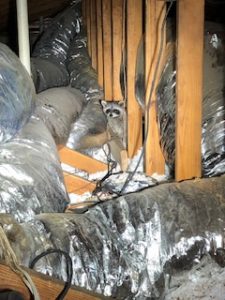 Photos by
Photos by 